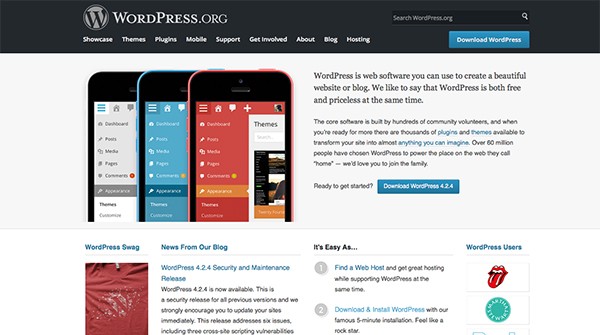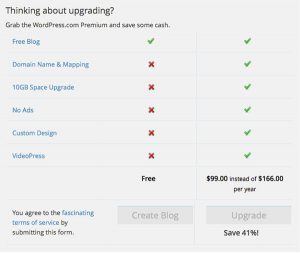
What started as an open-source platform for bloggers has become a major part of the web designer’s toolkit. WordPress gets us closer than ever to the dream of separating content from structure. Graphic designers can design a website and safely turn content generation over to the people who own it — the people who create it.
WordPress actually comes in two flavors:
 WordPress.com is a hosted blogging platform that anyone can sign up for. It has a free component that contains ads, but serious bloggers end up paying about $99 per year (current as of 08/2013) to get an ad-free version with special bonuses like domain names and mapping, as well as more storage space.
WordPress.com is a hosted blogging platform that anyone can sign up for. It has a free component that contains ads, but serious bloggers end up paying about $99 per year (current as of 08/2013) to get an ad-free version with special bonuses like domain names and mapping, as well as more storage space.- WordPress.org, on the other hand, is the place to download self-hosted versions of the platform, and is really what I’m yacking about in this blog. Creativity demands control over the media, and WordPress.org gives you complete access to everything. (Word to the wise: just because you can change it doesn’t mean you should change it. Make sure you know what you’re doing, or at least can un-do it, before you make any changes.
There were a lot of professional software programs that tried to provide the separation of content from design that I mentioned earlier, most notably an Adobe product called Contribute that was meant to go hand-in-hand with Dreamweaver.
A lot of my clients could not really get into Contribute, however, because it had too steep of a learning curve for them. Now several years later, we see the growing market-share of WordPress, which is much more approachable for people who don’t know and don’t care what HTML stands for, but really want to get their message out to their audience quickly.
And that brings us full circle to why WordPress should be part of your web-design-business strategy. You can easily establish templates for design, restrict the activities of non-administrative persons from breaking the design, and allow the client to publish at will without waiting for time to open up in your production schedule. Win, win, win.
WordPress is a big deal. It doesn’t replace the need for designers to know how to code websites from scratch, but it definitely helps us bring the web to our clients, instead of insisting that they learn our business before they can start to write.




